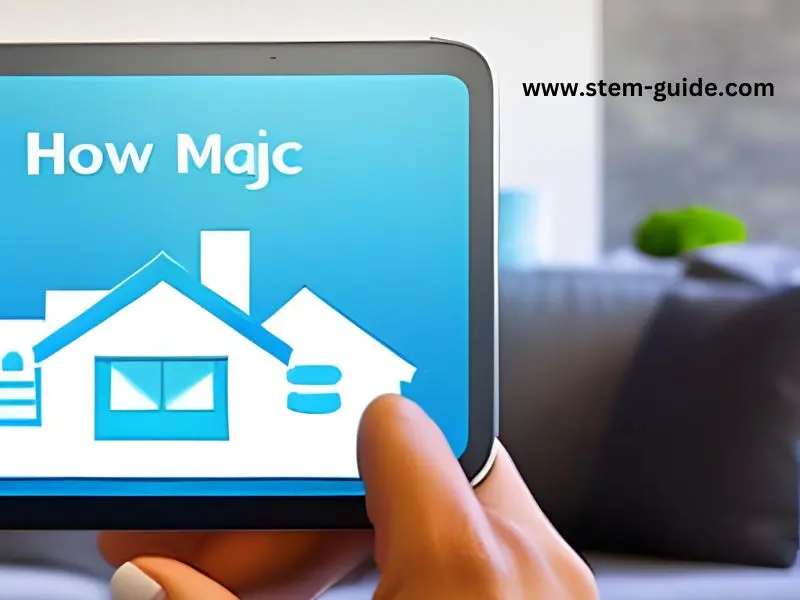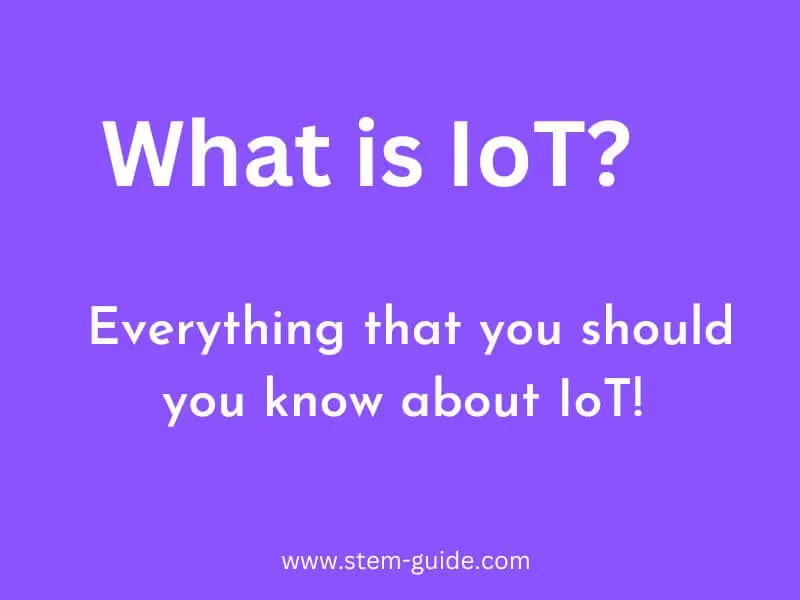Smart home automation has emerged as a transformative technology, reshaping the way we live and interact with our homes. At the core of this revolution lies the Internet of Things (IoT), a network of interconnected devices that communicate and exchange data over the Internet.
IoT projects play a pivotal role in enhancing smart home automation by seamlessly integrating various devices and appliances within a home network.
Let’s explore how these projects enable a new level of control, efficiency, and convenience for homeowners.
Understanding Smart Home Automation:
Before diving into the world of IoT projects, it’s essential to grasp the concept of smart home automation. Simply put, smart home automation involves connecting various devices and appliances within a home to a central network that can be controlled remotely. This integration allows for streamlined operations, enabling homeowners to manage and monitor their homes with ease.
The Role of IoT in Smart Home Devices:
IoT serves as the backbone of smart home automation, enabling devices to communicate and work together harmoniously. IoT technology is seamlessly integrated into smart home devices, enhancing their functionality and capabilities.
- Smart Lighting Systems: IoT integration in smart lighting systems enables users to control lighting remotely through smartphone apps or voice commands. With IoT-powered smart bulbs, homeowners can adjust brightness levels, change colors, and schedule lighting based on their preferences.
- Smart Thermostats: IoT-enabled smart thermostats use data from sensors and machine learning algorithms to optimize temperature settings based on user behavior. These devices learn homeowners’ habits and adjust the temperature accordingly, promoting energy efficiency and cost savings.
- Smart Appliances: IoT-powered smart appliances, such as refrigerators and washing machines, offer added convenience and efficiency. For instance, a smart refrigerator can monitor food inventory and suggest recipes based on available ingredients.
- Voice Assistants: Voice assistants like Amazon Echo with Alexa and Google Home with Google Assistant play a crucial role in smart home automation. They act as intuitive interfaces, allowing users to control smart devices with simple voice commands.
Enhanced Control and Accessibility:
One of the significant advantages of IoT projects in smart home automation is the enhanced control and accessibility they offer to homeowners. Through IoT technology, smart home devices become accessible remotely via smartphones and other connected devices.
- Remote Access: With IoT integration, homeowners can access and control their smart home devices from anywhere in the world through dedicated mobile apps. Whether it’s adjusting the thermostat, turning off lights, or starting the robotic vacuum cleaner, remote access adds unparalleled convenience.
- Voice Commands: Voice assistants have revolutionized smart home control, providing hands-free interaction with smart devices. By simply issuing voice commands, homeowners can perform various tasks, such as playing music, adjusting lighting, or setting reminders.
- Automated Routines: IoT projects enable the creation of automated routines and schedules. Homeowners can program smart devices to perform specific actions at designated times or under specific conditions. For example, the lights can automatically turn on and off at specific times or adjust brightness levels based on natural light conditions.
Energy Efficiency and Sustainability:
IoT projects significantly contribute to energy efficiency and sustainability in smart homes. By leveraging real-time data from IoT sensors, homeowners can monitor and optimize energy consumption, leading to reduced waste and lower utility bills.
- Optimizing Energy Consumption: Smart thermostats, equipped with IoT technology, continuously collect data on temperature preferences and usage patterns. Using this data, the thermostats make intelligent decisions to optimize heating and cooling, leading to energy conservation.
- Smart Grid Integration: The integration of IoT in smart grids enables better energy distribution and optimization. Smart grids leverage data from IoT devices to analyze electricity demand and supply, resulting in more efficient energy management.
- Monitoring and Managing Energy Usage: With IoT devices such as smart plugs and energy monitors, homeowners can track real-time energy usage. By having access to this data, they can identify areas where energy could be conserved and adopt more sustainable practices.
Improved Security and Safety:
Home security and safety are paramount concerns for homeowners, and IoT projects play a vital role in addressing these issues. IoT-enabled security systems offer advanced features and remote monitoring capabilities, enhancing the overall safety of smart homes.
- IoT-Based Security Systems: Traditional security systems have evolved into sophisticated IoT-powered security solutions. Smart cameras, motion sensors, and door/window sensors work together to provide comprehensive security coverage.
- Real-Time Monitoring: IoT security systems offer real-time monitoring of a home’s surroundings. Homeowners can access live camera feeds and receive instant alerts on their smartphones in case of any suspicious activity.
- Smart Locks: IoT-enabled smart locks offer added convenience and security. Homeowners can lock or unlock doors remotely using their smartphones. Temporary access can be granted to family members, friends, or service providers without the need for physical keys.
Personalization and User Experience:
IoT projects pave the way for personalized and intuitive smart home experiences. By analyzing user behavior and preferences, IoT devices offer tailored recommendations and user-friendly interfaces.
- Customizing Smart Home Settings: IoT devices collect data on user behavior and preferences, allowing for customized smart home settings. For example, the thermostat can adjust the temperature based on the user’s daily routine and temperature preferences.
- Personalized Recommendations: IoT projects enable devices to offer personalized recommendations. For instance, a smart home assistant might suggest a playlist based on the user’s music preferences or provide recipe ideas based on available ingredients in the smart refrigerator.
- User-Friendly Interfaces: IoT devices boast user-friendly interfaces that make interaction seamless and intuitive. Whether it’s a smartphone app or a voice-activated assistant, the interfaces are designed for easy navigation and control.
Smart Home Ecosystem Integration:
IoT projects foster interconnectivity among smart devices, creating a unified smart home ecosystem. Homeowners can integrate IoT devices from different manufacturers to create a cohesive automation experience.
- Interconnectivity Among Devices: IoT projects enable smart devices to communicate and work together, forming a cohesive network. For example, a smart home assistant can communicate with smart lighting systems and appliances to create automated routines.
- Integration of IoT Devices: Homeowners can integrate IoT devices from various manufacturers into their smart home ecosystem. This allows for more extensive customization and the ability to choose the best-in-class devices for each specific need.
- Expanding the Smart Home Ecosystem: As IoT technology continues to advance, homeowners can explore and incorporate new devices and technologies into their smart home ecosystems. The possibilities for expansion and innovation are virtually limitless.
IoT Projects for Smart Home Automation:
A wide array of IoT projects caters to individuals with varying levels of technical expertise. From beginner-friendly projects to advanced ventures, the world of IoT offers something for everyone.
- DIY IoT Projects for Beginners: Entry-level IoT projects provide an excellent starting point for beginners. These projects often involve simple components and easy-to-understand programming languages, making them ideal for newcomers.
- Advanced IoT Projects for Tech Enthusiasts: For those with more technical prowess, advanced IoT projects offer challenges and opportunities for innovation. These projects delve into complex technologies and advanced applications of IoT.
- Exploring the Potential of AI: As artificial intelligence (AI) continues to evolve, its integration with IoT opens up new possibilities for smart home automation. AI-powered smart assistants can learn and adapt to users’ preferences, making smart homes even more intuitive.
Challenges and Considerations:
While IoT projects offer remarkable benefits, they also come with specific challenges and considerations that homeowners need to address.
- Security and Privacy Concerns: IoT devices are susceptible to security breaches if not properly secured. Homeowners must implement robust security measures to protect their smart home ecosystems from potential cyber threats.
- Compatibility and Interoperability: Ensuring that different IoT devices can communicate and work together seamlessly requires careful consideration of compatibility and interoperability.
- Addressing Connectivity Issues: Smart home automation relies on stable and reliable internet connectivity. Homeowners must address connectivity issues to prevent disruptions in the functioning of IoT devices.
Future Trends in Smart Home Automation:
As technology continues to evolve, smart home automation is poised for exciting advancements and innovations.
- Evolving Technology and Innovations: IoT technology is evolving rapidly, leading to the development of smarter and more efficient devices. As new technologies emerge, the capabilities of smart home automation will continue to expand.
- Integration of IoT with 5G and Edge Computing: The integration of IoT with 5G and edge computing will revolutionize smart home automation. Faster data transmission and lower latency will enhance the responsiveness and performance of IoT devices.
- Smart Homes as Part of Smart Cities’ Infrastructure: Smart homes will become an integral part of smart cities’ infrastructure. The integration of IoT projects in smart cities will lead to more connected and sustainable urban living.
Conclusion:
IoT projects have become instrumental in enhancing smart home automation, revolutionizing the way we interact with our living spaces. Through seamless integration and intelligent control, IoT-powered devices offer unprecedented convenience, energy efficiency, security, and personalization. As the IoT ecosystem continues to evolve, the possibilities for innovative smart home solutions are boundless.
By embracing IoT projects, homeowners can embark on a journey toward a more connected, efficient, and enjoyable smart home experience.


